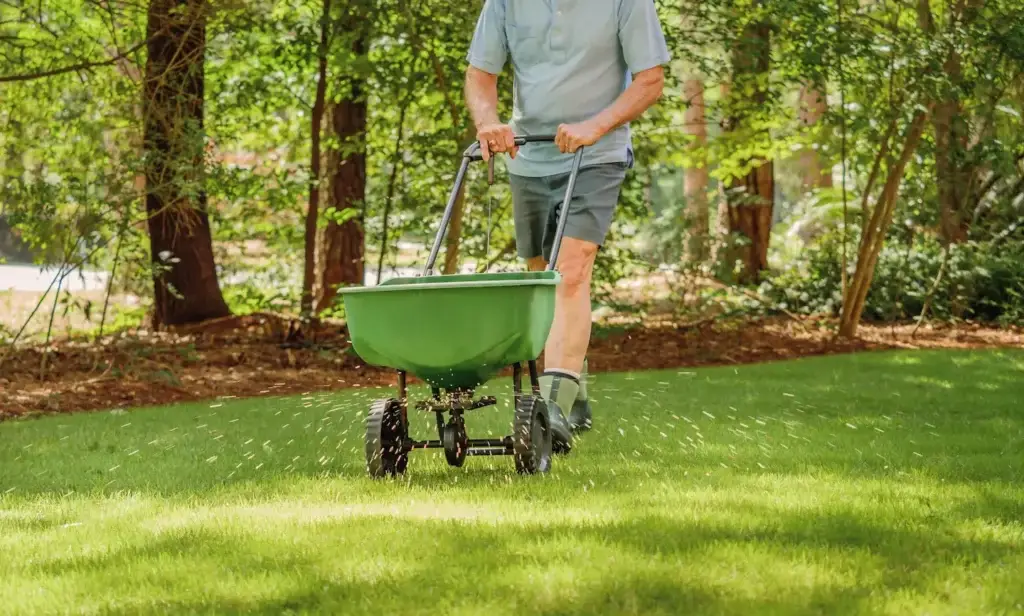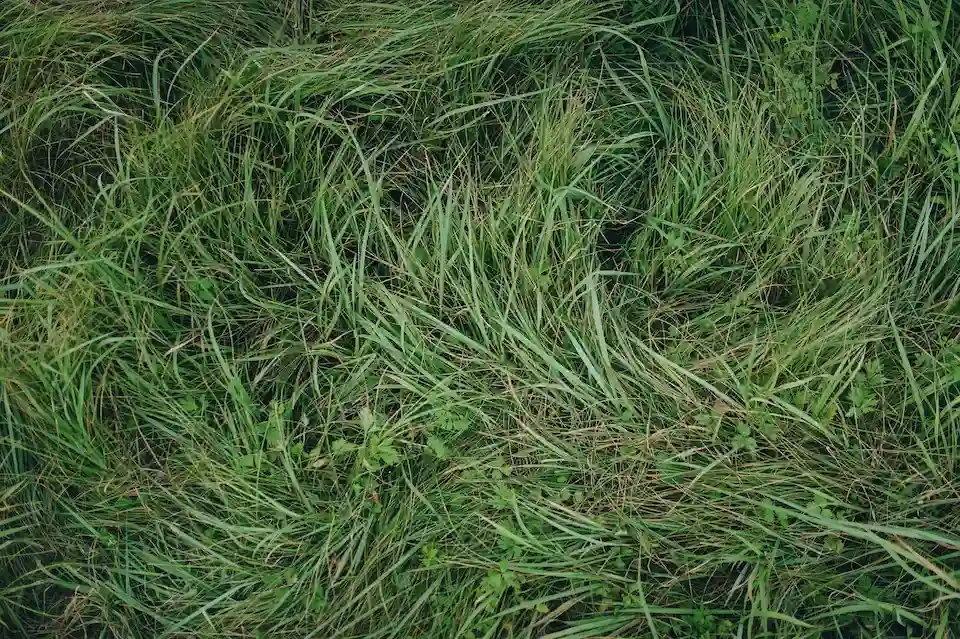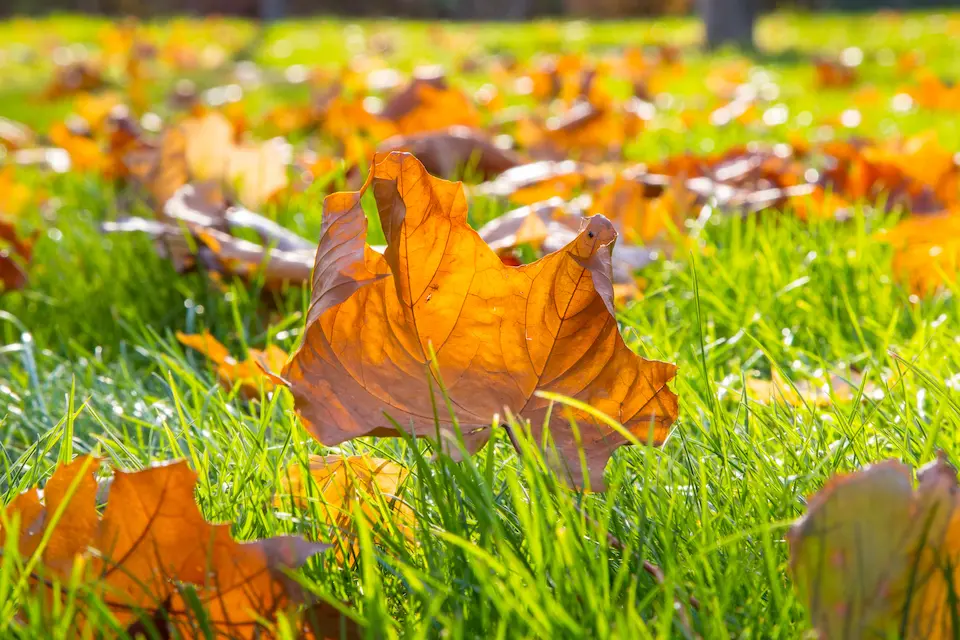
If you want to have a plush lawn, you have to make sure it’s not only mowed regularly but also has the proper nutrients. This is where fertilization comes into play. Whether you have a warm-season lawn or a cool-season lawn, knowing when and what to do in the fertilization department makes a big difference in whether your lawn is brown or green.
At FortSmith Landscaping, we help many homeowners achieve a great-looking lawn year-round. Wondering when to fertilize your lawn in NC for optimal growth? Our lawn fertilization experts have provided some useful information here when it comes to how to fertilize your lawn, no matter what type of grass you have.
The Importance of Lawn Fertilization
Why fertilize? Fertilizing your lawn helps to promote lush, green color as well as make your lawn less resistant to diseases. A well-fertilized lawn is also less likely to be damaged by pests. This not only saves you money but also helps to improve your lawn’s appearance.
Understanding the Grass Types in NC

Differentiating Warm-Season Grasses and Cool-Season Grasses
Warm-season grasses include those that grow mostly from June through early September. they do well in hot, dry weather, and typically will stay green in July and August. Most warm-season lawns are typically brown or dormant from late September to May. This is why it’s so important to keep warm-season grasses properly fertilized.
Cool-season grasses grow best in spring and fall when the soil and air temperatures are cooler. Cool-season grasses tend to remain somewhat green.
Characteristics of Bermuda Grass, Zoysia Grass, and St. Augustine Grass
Bermuda Grass, Zoysia Grass, and St. Augustine Grass are all warm-season lawns.
- Bermuda Grass
Bermuda grass grows most from late spring through the summer. It thrives in the Midwest due to its drought and heat-resistant properties. Bermuda grass is often considered a low-maintenance grass compared to other warm-season grasses. It goes dormant during the cool temperatures, turning brown.
- Zoysia Grass
Zoysia grass is a hardy grass that is heat and drought resistant. While it may take a while to grow, the result is a lush, thick lawn that makes it difficult for weeds to grow. It requires less fertilizer and water than cool-season grass, but a little more than Bermuda Grass.
- St. Augustine Grass
St. Augustine Grass is a spreading warm-season grass in warm climates. Augustine lawns have a bluish-green leaf color with wide, flat blades. It tolerates salt well, making it an ideal choice for people who live along the coast.

Characteristics of Kentucky bluegrass, tall fescue, and fine fescue
Kentucky Bluegrass, tall fescue, and fine fescue are all considered cool-season grasses.
- Kentucky Bluegrass
Kentucky Bluegrass grows quickly in warm and cold temperatures but doesn’t do too well in drought conditions. It produces medium-sized lead blades and a soft feel. Kentucky Bluegrass is one of the most widely used cool-season grasses in the nation.
- Tall Fescue
Tall fescue has thicker blades and grows into a great emerald green. It is known to adapt well in the Midwest. Since its roots grow deep, it can survive with less watering compared to other types of grass.
- Fine Fescue
Fine fescue is a standard turf grass. It usually stays green all year in most parts of the country and can tolerate droughts.
Fertilization Schedule for Warm-Season Grasses
Early Spring: Prepping Warm-Season Grasses
During the early spring, you’ll want to prep warm-season grasses by fertilizing them as soon as they turn green. You can fertilize every other month during the growing season, or up to monthly. You’ll also want to control dandelions and other broadleaf weeds you find in your lawn.
Late Spring: Boosting Warm-Season Grass Growth
In the late spring, you’ll want to continue to fertilize your warm-season grasses except for Centipede. You can also control weeds on fescue lawns with certain herbicides.
Summer: Maintaining Warm-Season Grass Health
From May to September, you can continue to fertilize your lawn every other month or up to once a month. If you’re unsure whether you need to fertilize your lawn, you can contact the pros at FortSmith Landscaping. We can make sure that your lawn gets the proper fertilization during the summer months and all year long. During the winter, potassium fertilizer can be used on Centipede lawns to help them stay healthy.

Fertilization Schedule for Cool-Season Grasses
Early Fall: Preparing Cool-Season Grasses for Winter
For cool-season grasses, you can fertilize them in late summer or early fall, typically six weeks before your area’s first anticipated frost. Treat any post-emergent broadleaf weeds with spot treatments or weed & feed products.
Look to apply lime or other soil additives depending on what your soil tests show. Anything you add in the fall will work over the winter. Also, be sure to rake or collect any fallen leaves because unraked leaves can suffocate the grass. Be sure not to overwater by reducing supplemental watering.
Late Fall: Strengthening Cool Season Grass Roots
During the late fall, continue to mow the lawn until it stops growing. Continue to water your grass as needed. While grasses should go into the winter fully hydrated, you don’t want the soil to be oversaturated.
Winter: Minimal Fertilization for Cool Season Grasses
Do a soil test for winter to see what nutrients it may need. You will have time to fix your soil for optimal growth before the spring arrives. You don’t want to make the mistake of overfertilizing during the winter months. Too much fertilizer will add too much nitrogen and salt to the soil, which can kill your lawn.
Be sure to flush any salt-impacted or pet-stressed areas as soon as the soil thaws enough for the water to move freely. This helps to get the salt away from the roots and reduces potential damage.
FAQs about Lawn Fertilization in NC
What month should I put fertilizer on my lawn?
This depends on whether you have cold-season or warm-season grass. If you have cold-season grasses like fescue, fertilize it two weeks after it starts to get green in the fall. For warm-season grasses like Bermuda, fertilize two weeks after it starts to get green in the spring.
How do I know when my lawn needs fertilizer?
If you notice your lawn turning brown or yellow, it’s a sign it may not be getting the proper nutrients and needs fertilizer. This can be common in spring when the grass is waking up from its dormant season and preparing to grow again.
Is it better to fertilize grass before or after rain?
Do not fertilize your lawn before or after heavy rains. Instead, look to fertilize it a day or so after a light rain. This prevents the application from being washed away.
Contact FortSmith Landscaping for All Your Fertilization Needs in North Carolina
When it comes to having your lawn properly fertilized, you can trust the team at FortSmith Landscaping to get the job done. We can take care of your lawn year-round to make sure that all the proper steps are being taken to keep your lawn plush and green.
We can also provide you with expert tips for maintaining a healthy lawn in North Carolina. Call us today at (919) 228-8495 so that we can take care of all your lawn care needs.
